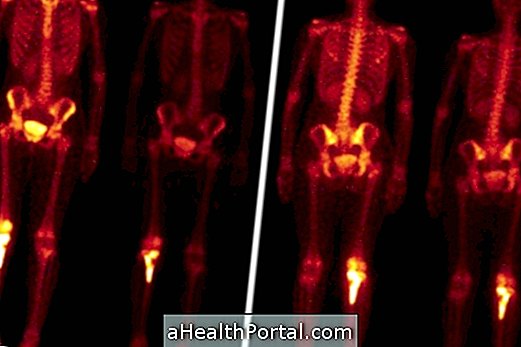Basophils are important cells for the immune system, and are usually increased in cases of allergy or prolonged inflammation such as asthma, rhinitis or urticaria. Basophils have innumerable granules in their structure, which in situations of inflammation or allergy, for example, release heparin and histamine to combat the problem.
These cells that form in the bone marrow are a type of white blood cells, also known as leukocytes, which can be evaluated through a blood test indicated by the doctor, the leukogram, which is one of the constituents of the blood count. Here's how to interpret the leukogram.
Basophils are present in the blood at very low concentrations, with basophils being normal reference values ranging from 0-2% or 0-200 / mm3 for both men and women.

Reference values of Basophils
Normal values of basophils in blood are indicated according to the total amount of leukocytes in the blood, accounting for about 0 to 2% of the total leukocytes.
This table indicates reference values for lymphocytes in adult men and women, which include basophils.
| Parameters | Reference values |
| Leukocytes | 4500 - 11000 / mm³ |
| Neutrophils | 40 to 80% |
| Eosinophils | 0 to 5% |
| Basophils | 0 to 2% |
| Lymphocytes | 20 to 50% |
| Monocytes | 0 to 12% |
The reference values for basophils do not vary between adult men and women, however it may vary according to the laboratory in which the blood test is performed and therefore the result of the examination should always be seen by the doctor.
Because basophils can become tall
The increase of basophils in the blood, known as basophilia, occurs in cases of:
- Ulcerative colitis, which is inflammation of the intestine;
- Asthma ;
- Sinusitis and rhinitis, which corresponds to inflammation of the perineal sinuses, which are found in the respiratory tract, usually associated with infections;
- Arthritis, which is inflammation of the joints of the body and causing pain;
- Chronic renal failure, especially in cases of kidney malfunction, such as nephrosis;
- Hemolytic anemia, in which the erythrocytes are destroyed, compromising the transport of oxygen and nutrients to the organism;
- Chronic Myeloid Leukemia ;
- After doing chemotherapy or removing the spleen.
If basophilia is noticed, it is important to check the blood count and ask for other tests so that you can know the cause of the basophilic increase and thus start treatment.
What can indicate low basophils
Basopenia, which is when basophils are low, is uncommon and usually occurs due to decreased production of white blood cells by the bone marrow, and it is possible to identify only 20 cells per liter of blood.
The main causes of basopenia are ingestion of drugs that weaken the immune system, such as corticosteroids, ovulation, pregnancy, period of stress, hyperthyroidism and Cushing's syndrome.
Know the function of the other white blood cells:
- Eosinophils
- Monocytes
- Neutrophils



























